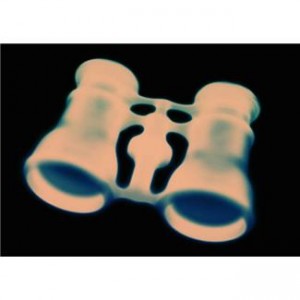Learning to see what service learning means
23 March 2012 – Denise Meringolo
 Recently, I attended a local “unconference” designed to bring together preservationists, public historians, community activists and others. During the day, this sentence popped into my head: “People do not forget; they never knew.”
Recently, I attended a local “unconference” designed to bring together preservationists, public historians, community activists and others. During the day, this sentence popped into my head: “People do not forget; they never knew.”
I first came across that pithy explanation of social amnesia in an essay by Barbara J. Little and Mark P. Leone, “Artifacts as Expressions of Society and Culture: Subversive Genealogy and the Value of History.” Social amnesia, first described by Russell Jacoby in 1975, is a kind of false consciousness. It is the collective process by which people seem to forget that their social environment has a past. Without a working understanding of history as a process, they instead conclude that their everyday experiences are natural and inevitable. As public history educators, we are painfully aware of this condition in our students and in our audiences. Yet several conversations I had with colleagues at the unconference reminded me that we may not be as conscious of the ways in which social amnesia afflicts our own practice.
Modifying Leone and Little, I would argue that we have not forgotten what it means to be of service; we never knew. During the two sessions I attended, several museum educators, curators, and archivists–all of whom, I should hasten to say, have my utmost respect for their professionalism and their sense of mission–sought new strategies for outreach. Though the details varied, the problem was the same. Each practitioner had carefully designed a program or gathered a collection or curated an exhibition, and each was somewhat disappointed either by modest interest in their project or by their inability to attract new and underserved audiences to their site.
I’ve been that professional, and I understand both the frustration and the good intentions. I also see it as a challenge to public history educators like me. We have not fully understood public history as service, so we are not effectively training the next generation of public historians. It occurred to me that the problem is not one of outreach. Instead, it is a problem of “in reach.” To practice public history as public service, we must not ask the question, “How can we convince audiences to visit our site and digest our lessons?” Rather, we must position ourselves in service to potential stakeholders. We must ask, “How can our materials and expertise serve your needs, help you answer your questions, and help you define, understand, and impact your social environment?” We will only be able to adequately explain the value of our work if we can document its real and present day impact.
This year, I am initiating a new partnership with a local preservation advocacy organization, Baltimore Heritage. They recognize history as one of several tools for encouraging smart growth and community-centered revitalization. My students will work with them to identify structures and stories that will not simply help redevelop a blighted area of the city, but will also give voice to under-represented experiences and disenfranchised citizens, providing them with a vehicle for shaping their social and cultural environment. My goals are likely over-ambitious, and we may not succeed. Nonetheless, this is an approach to service learning that has the potential to link research and teaching to community organizing in a visible and challenging way.
This blog is intended to serve as an active and engaged community, too. Over the course of this year, I hope other public history educators will submit thoughtful posts on the philosophy and techniques for curriculum development, teaching, and student engagement. Here, we can participate more actively in a wide ranging conversation about how best to prepare our students for work in the 21st century. Along the way, I suspect we will identify a host of challenges for ourselves, our students, and our partners. These are not challenges we have forgotten; they are simply challenges we are learning to see. Together, we will make them more visible and more manageable.
~ Denise Meringolo



